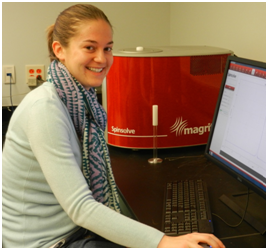Dr Joseph Hornak is Professor of Chemistry and Imaging Science at the Rochester Institute of Technology, RIT, where he teaches courses in magnetic resonance imaging, nuclear magnetic resonance spectroscopy, analytical chemistry, and physical chemistry.
He is also Director of the Magnetic Resonance Laboratory, MRL, a research and development laboratory on the RIT campus. His research interests include multi-spectral tissue classification with magnetic resonance images, near-surface MRI, low-frequency electron spin resonance of free radicals, magnetic resonance hardware development, and magnetic resonance imaging of materials. Dr Hornak is author of more than 170 published and conference papers on magnetic resonance related topics.
MRL is a research and development laboratory devoted to solving real world problems using magnetic resonance. Its focus varies greatly. Currently the lab is working on a phantom for fMRI, developing applications for low frequency electron paramagnetic resonance, and measuring relaxivities of some targeted MRI contrast agents. Dr Hornak’s student, Amy Becker, a 2nd year Imaging Science student at RIT, is working on the analysis end of the project involving the contrast agents. The project is a collaboration with a research group headed by Dr Hans Schmitthenner which is synthesizing some unique, targeted MRI contrast agents. Amy’s project is to measure the NMR relaxivity of the agents. As with all contrast agents, you want to know the relaxivity at the field strength they will be used. Most clinical MRI systems in the world operate at a field strength of between ~0.75 and 3.0 Tesla. MRL chose the Magritek Spinsolve system because it operates at ~1 Tesla and is therefore a perfect instrument for getting these values at the low end of this range.

Speaking of the selection of the Magritek system, Dr Hornak said “We chose the Spinsolve NMR for use in an Instrumental Analysis laboratory with 90 students (mostly chemical engineers). In addition to NMR, students get exposure to UV-Vis, fluorescence, AA, and IR spectroscopies. We wanted an NMR with a low operating cost which could be sited in the lab, and leave the students with a positive NMR experience. Just like with the Terranova from Magritek, the Spinsolve scores high points for ease of use, both in collecting and processing the data. Shimming is easy and does not need to be performed on each sample. The resolution is sufficient for students to easily analyze 1- and 2-D H spectra of small molecules. It can be used to measure spin-lattice and spin-spin relaxation times at 40 MHz that we cannot take with other instruments.”
About Magritek
Magritek provides complete NMR and MRI solutions and applications for Chemical, Pharmaceutical, Oil and Gas, Food and Construction Industries as well as components and subsystems suitable for Research Laboratories and Academic Education. Magritek has offices in Aachen, Germany, San Diego, USA, and Wellington, New Zealand and a global network of distributors and agents to support customers. The initial NMR technology and IP used in Magritek products grew out of decades of world-class research by Ampere prize winner Professor Bernhard Bluemich’s group at RWTH Aachen University, and Gunther Laukien prize winner Paul Callaghan’s team at Massey University and Victoria University of Wellington.